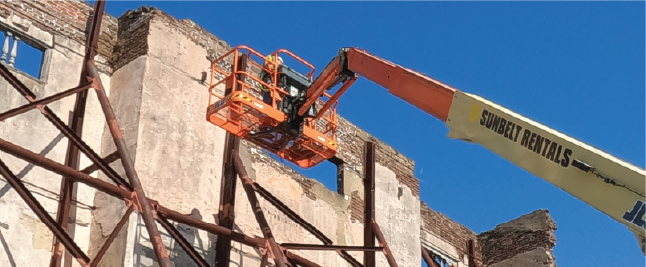
Structural engineering in historic restoration is a unique discipline that blends precision science with architectural art. While structural engineering ensures the safety and longevity of all buildings, its role in preserving historic structures goes beyond calculations and codes; it protects cultural heritage, supports sustainability, and revitalizes iconic landmarks for future generations.
Why Historic Building Restoration Matters
Historic buildings are more than old structures—they are physical stories of a community’s history, architecture, and identity. From the Rice Mill façade in Charleston to historic main street storefronts across America, these buildings connect us to our past.
Key reasons to restore historic structures include:
- Cultural significance: They preserve local history and character.
- Environmental impact: Reusing existing buildings reduces material waste and carbon emissions.
- Economic revitalization: Historic districts attract tourism and investment.
However, age takes its toll. Timeworn materials, outdated building methods, and obsolete safety standards all present challenges - ones that structural engineers are uniquely equipped to solve.
Top Challenges in Structural Engineering for Historic Restoration
Restoring historic buildings involves striking a careful balance between preservation and modernization. Some of the most common structural challenges include:
1. Preserving Original Materials and Design
Historic buildings were often built with materials like wood, stone, or wrought iron, which behave differently than modern steel or concrete. Engineers must account for how these materials have aged and how they interact with new reinforcements.
2. Meeting Modern Building Codes
Historic structures were not designed for modern seismic safety, fire resistance, or ADA compliance. Engineers must integrate safety features—often invisibly—to protect occupants while maintaining authenticity.
3. Hidden Structural Damage
Time, moisture, and use often leave unseen damage. Structural assessments must be meticulous, using tools like 3D laser scanning, ground-penetrating radar, and non-destructive testing.
What Structural Engineers Do in Historic Restoration Projects
From churches and courthouses to warehouses and theaters, structural engineers play a crucial role in bringing aging buildings back to life. Here's how:
Comprehensive Structural Assessment
Before any work begins, engineers evaluate the building’s integrity—foundations, walls, beams, roofing systems, and more. The goal: identify weaknesses while minimizing intervention.
Restoration Planning & Design Collaboration
Working with architects, preservationists, and conservationists, structural engineers help create a restoration plan that meets safety codes while honoring historic details.
Material Selection & Compatibility
Material choice is vital. Engineers may source historically accurate wood or stone or use modern equivalents that replicate appearance but offer greater durability and efficiency.
Integrating Modern Systems Discreetly
Adding HVAC, plumbing, electrical, or IT systems to a centuries-old structure requires careful routing and concealment. Engineers ensure installations don't harm the structure or visual appeal.
Sustainability in Preservation
Adaptive reuse - transforming old buildings into homes, offices, or hotels—is a green building strategy. Engineers support this by improving insulation, adding efficient windows, and integrating renewable technologies like solar panels or geothermal heating, all while retaining historic value.
Benefits of Structural Engineering in Historic Restoration
- Prolongs the life of cherished landmarks
- Enhances property value and safety
- Boosts community identity and civic pride
- Reduces environmental impact
- Supports local tourism and revitalization
Engineering That Honors the Past and Builds the Future
Structural engineering for historic restoration is where preservation meets innovation. Engineers ensure that beloved buildings - from stone cathedrals to mid-century homes - not only survive but thrive. These projects protect the character of our communities while adapting to modern needs, making historic restoration one of the most impactful and inspiring fields in structural design.
